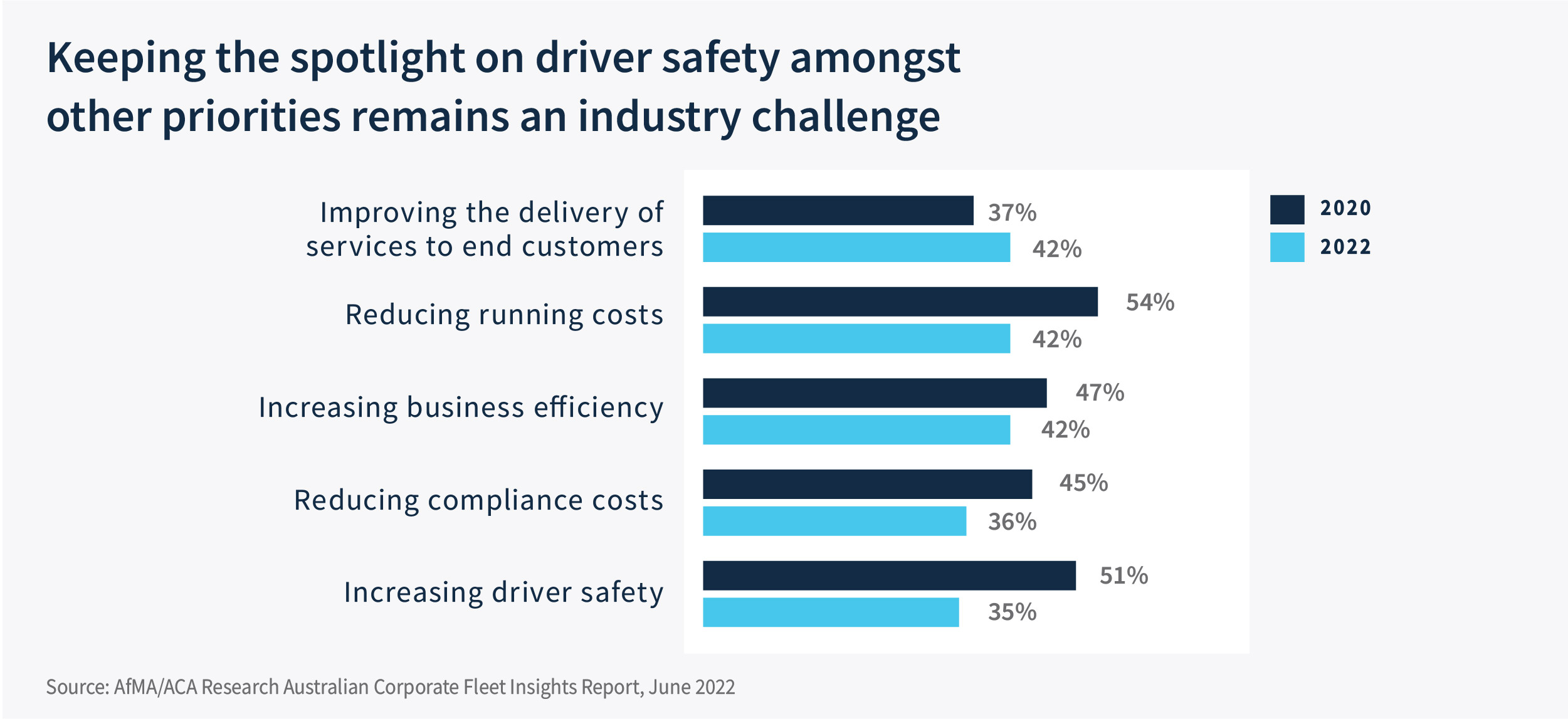
There has been a 41% increase in the usage of company owned vehicles over the last 12 months.1 Many drivers are due for a safety refresher after a period focused on COVID-safe protocols. Yet the latest AfMA Fleet Insights Report shows us driver safety has moved from the second highest priority in 2020 to fifth in 2022. In this article we explore solutions to keep drivers safe and effectively manage this risk without increasing the workload for fleet managers.

Driver training needs to be consistent, effective and trackable
Education and training are essential foundations that keep drivers and the community safe. Equally important is the ability of fleet managers to demonstrate training participation and effectiveness.
Solutions such as Interleasing’s comprehensive e-learning platform, Driver Training, can help fleets demonstrate a continuous driver education experience and measure its effectiveness through trackable results, whilst delivering stakeholder visibility.
Interleasing’s Driver Training delivers maximum impact in a convenient and accessible way. Experience:
- Best-practice guidance through 16 learning modules
- Easy to digest training broken down into 8-10 minute sessions
- 24/7 access – so drivers can complete their learning at a time that suits them
- The ability to see individual driver training records
- The convenience of reminders for future training
Technology can help identify and track driver safety risks
Utilising technology can be a time saving, cost-efficient and better way to improve your fleet’s driver safety outcomes. Not only can these platforms ensure a compliant fleet, by capturing grey fleet information such as registration, insurance and vehicle maintenance, they can also deliver information needed to make informed proactive decisions – such as identifying high risk vehicles, behaviours and drivers.
Interleasing’s Driver Manager solution, for example, includes a compliance dashboard that identifies non-compliant drivers and vehicles. The technology even builds risk profiles and scores for each driver that can assist in risk management and planning.
Together with Interleasing’s Accident Tracker platform, which provides full visibility of the financial and operational impacts of all accidents, it can also quickly help ascertain high-risk drivers and those that might benefit from further training, to help ensure your driver safety risks are minimised.
Interleasing’s Driver Manager collects driver and vehicle information you need and houses:
- Company policies and procedures for easy access and record keeping
- A compliance dashboard for drivers with email alerts sent to managers should any document be declined
- A risk profiler for each driver
- An overlay of vital driver and grey fleet vehicle data for compliance, cost management and to help improve WHS/OHS compliance
Taking a pro-active approach improves safety and protects organisational reputations
Today, the expectations placed on fleets go far beyond avoiding physical accidents, to include how your drivers and organisation are perceived in the wider community.
Managing the impact of the most common causes of fleet-related accidents – reversing or parking, damage whilst parked, nose to tail collisions, unexplained/unreported damage and incidents caused by hitting objects on road2 – is now coupled with the responsibility of considering other, often unseen impacts of poor driver safety, like reputational damage.
The hidden costs of poor driver safety
The fleet, and in particular vehicles with branding, are a very public expression of your organisation’s culture and values. Poor driver safety and behaviour can not only cause accidents but can present a highly negative view of your brand, whether this is failure to adhere to road laws, aggressive behaviour behind the wheel or simple discourtesy. Ensuring your employees recognise that they are representatives of your organisation when they are driving for business, can help change the mindset of drivers behind the wheel, improving both safety and reputational outcomes.
Safety risk management should extend to all of your fleet
Taking a proactive approach can help your organisation get on top of undesirable behaviour before it causes a serious accident. Driver behaviour, use of mobile phones, drug and alcohol policy, traffic laws and speeding should all be covered as part of your fleet risk policy, as well as ensuring you have a section that clearly details the responsibilities of the driver (and organisation) in the event of an accident.
When it comes to safety, a robust policy should encompass not just vehicles owned or leased by your organisation, but all vehicles used for business purposes, including vehicles owned by employees and contractors, and those hired for short or medium-term use.
Interleasing can help enhance your fleet’s driver safety practices
Interleasing’s Driver Training and Driver Manager platforms give organisations a better way to implement, manage driver safety practices across their fleet. To book in your demo get in touch today.


